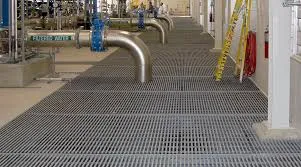
-
 Afrikaans
Afrikaans -
 Albanian
Albanian -
 Amharic
Amharic -
 Arabic
Arabic -
 Armenian
Armenian -
 Azerbaijani
Azerbaijani -
 Basque
Basque -
 Belarusian
Belarusian -
 Bengali
Bengali -
 Bosnian
Bosnian -
 Bulgarian
Bulgarian -
 Catalan
Catalan -
 Cebuano
Cebuano -
 China
China -
 China (Taiwan)
China (Taiwan) -
 Corsican
Corsican -
 Croatian
Croatian -
 Czech
Czech -
 Danish
Danish -
 Dutch
Dutch -
 English
English -
 Esperanto
Esperanto -
 Estonian
Estonian -
 Finnish
Finnish -
 French
French -
 Frisian
Frisian -
 Galician
Galician -
 Georgian
Georgian -
 German
German -
 Greek
Greek -
 Gujarati
Gujarati -
 Haitian Creole
Haitian Creole -
 hausa
hausa -
 hawaiian
hawaiian -
 Hebrew
Hebrew -
 Hindi
Hindi -
 Miao
Miao -
 Hungarian
Hungarian -
 Icelandic
Icelandic -
 igbo
igbo -
 Indonesian
Indonesian -
 irish
irish -
 Italian
Italian -
 Japanese
Japanese -
 Javanese
Javanese -
 Kannada
Kannada -
 kazakh
kazakh -
 Khmer
Khmer -
 Rwandese
Rwandese -
 Korean
Korean -
 Kurdish
Kurdish -
 Kyrgyz
Kyrgyz -
 Lao
Lao -
 Latin
Latin -
 Latvian
Latvian -
 Lithuanian
Lithuanian -
 Luxembourgish
Luxembourgish -
 Macedonian
Macedonian -
 Malgashi
Malgashi -
 Malay
Malay -
 Malayalam
Malayalam -
 Maltese
Maltese -
 Maori
Maori -
 Marathi
Marathi -
 Mongolian
Mongolian -
 Myanmar
Myanmar -
 Nepali
Nepali -
 Norwegian
Norwegian -
 Norwegian
Norwegian -
 Occitan
Occitan -
 Pashto
Pashto -
 Persian
Persian -
 Polish
Polish -
 Portuguese
Portuguese -
 Punjabi
Punjabi -
 Romanian
Romanian -
 Russian
Russian -
 Samoan
Samoan -
 Scottish Gaelic
Scottish Gaelic -
 Serbian
Serbian -
 Sesotho
Sesotho -
 Shona
Shona -
 Sindhi
Sindhi -
 Sinhala
Sinhala -
 Slovak
Slovak -
 Slovenian
Slovenian -
 Somali
Somali -
 Spanish
Spanish -
 Sundanese
Sundanese -
 Swahili
Swahili -
 Swedish
Swedish -
 Tagalog
Tagalog -
 Tajik
Tajik -
 Tamil
Tamil -
 Tatar
Tatar -
 Telugu
Telugu -
 Thai
Thai -
 Turkish
Turkish -
 Turkmen
Turkmen -
 Ukrainian
Ukrainian -
 Urdu
Urdu -
 Uighur
Uighur -
 Uzbek
Uzbek -
 Vietnamese
Vietnamese -
 Welsh
Welsh -
 Bantu
Bantu -
 Yiddish
Yiddish -
 Yoruba
Yoruba -
 Zulu
Zulu
Exploring the Benefits and Applications of Fiberglass in Marine Vessel Construction and Design
The Significance of Fiberglass Vessels in Modern Marine Engineering
In the realm of marine engineering and boating, fiberglass vessels have gained immense popularity over the last several decades. Their unique properties and advantages over traditional materials make them a preferred choice for a variety of watercraft, from recreational boats to commercial ships. This article delves into the significance of fiberglass vessels, highlighting their benefits, production processes, and applications in the marine industry.
Advantages of Fiberglass
One of the primary benefits of fiberglass construction is its strength-to-weight ratio. Fiberglass is a composite material made from glass fibers and resin, allowing for a lightweight structure that maintains impressive durability and resistance to damage. This characteristic means that fiberglass vessels can achieve higher speeds and better fuel efficiency than those constructed from heavier materials, such as steel or aluminum.
Moreover, fiberglass exhibits excellent resistance to corrosion, particularly in harsh marine environments. Unlike wood, which can rot, or metals that may corrode due to saltwater exposure, fiberglass remains largely unaffected by the elements. This leads to lower maintenance costs and extended lifespan of the vessel. Additionally, fiberglass can be molded into complex shapes more easily than traditional materials, providing greater design flexibility for manufacturers and consumers alike.
Production Process
The production of fiberglass vessels typically involves a process called fiberglass lamination. This process begins by creating a mold of the desired shape of the vessel. Glass fibers, usually in the form of sheets or strands, are then coated with a resin mixture. The layers of fiberglass are laid into the mold, with additional resin applied to ensure a strong bond between the fibers. Once all layers are in place, the resin cures, solidifying the structure.
Recent advances in technology have further supplemented the fiberglass production process. Techniques such as vacuum infusion and resin transfer molding ensure better uniformity and finish in the final product. These methods enhance the strength of the fiberglass while reducing the amount of resin required, thus promoting environmental sustainability in manufacturing practices.
fiberglass vessel

Applications of Fiberglass Vessels
Fiberglass vessels have applications that span across various sectors of the marine industry. In recreational boating, fiberglass is the dominant material for sailboats, yachts, and motorboats. This popularity can be attributed to the aesthetic appeal of fiberglass finishes, coupled with the practicality of ease of maintenance and cost-effectiveness.
In commercial applications, fiberglass is widely used in fishing boats, ferries, and cargo ships. Their durability and maintenance efficiency make fiberglass vessels ideal for fishery operations and transporting goods across waterways. Additionally, specialized fiberglass designs are utilized in the construction of research vessels and patrol boats, where performance and reliability are critical.
Environmental Considerations
As the marine industry continues to evolve, so does the approach to sustainability. Fiberglass, traditionally viewed as less eco-friendly due to its composite nature, has seen developments in recycled materials and eco-resins. Manufacturers are increasingly exploring alternatives that minimize environmental impact while still delivering high-performance vessels. This shift is essential as the industry works to address the pressing issue of ocean pollution and resource conservation.
Conclusion
Fiberglass vessels represent a remarkable innovation in marine engineering, combining strength, versatility, and aesthetic appeal in one package. With their growing presence in both recreational and commercial applications, fiberglass boats are an enduring testament to the advancements in shipbuilding technology. As producers continue to refine their processes and address environmental concerns, the future of fiberglass vessels looks promising, ensuring their place in the vast expanse of our oceans for years to come.









